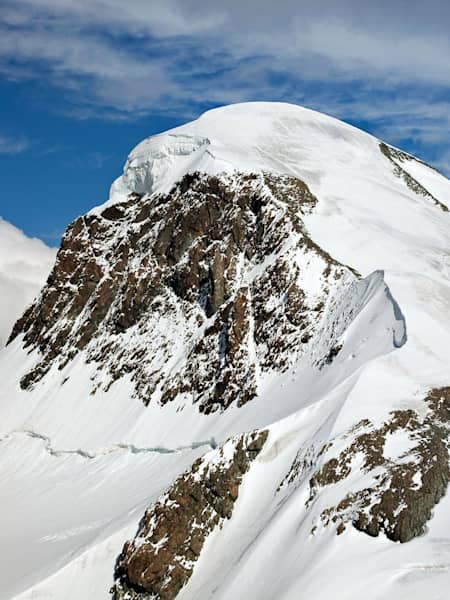1. Mount Fuji, Japan, 12,388 feet
Mount Fuji is a striking, singular peak rising almost 13,000 feet above Japan’s capital city, and one of the most-climbed mountains in the world. The hike up the most popular route, Kawaguchiko, is a great introduction to the stamina needed for climbing mountains, without technical terrain. The hike, all on well-established trail, starts at 7,545 feet and ends at the summit of 12,388 feet, and takes about eight hours round-trip for fit individuals. The official hiking season is only two months, July 1 to Aug. 31.
2. Pikes Peak, United States, 14,114 feet
Pikes Peak gets hikers about as high as they can get in the continental United States — all on a good trail. And if you get to the top and don’t feel like walking back down, you can hop on the cog railway or hitch a ride in a car from one of the tourists who have driven up the road on the mountain’s north side. From the trailhead, the 13-mile hiking route gains 7,381 feet — a strenuous day of hiking that gives aspiring mountaineers a taste of what it takes to climb big mountains.
3. Tofana di Rozes, Italy, 10,580 feet
The Dolomites’s Tofana di Rozes offers a great mountain hiking experience, gaining 3,937 feet from the trailhead to the summit, and adds in a component of exposed rock climbing — on novice-friendly via ferrata (a system of iron ladders, rungs and cables that the climber is tethered into in case of a fall). This provides all the experience of rock climbing without needing the expertise and knowledge of how to use rock climbing safety equipment. The Ferrata Lipella is one of the longest, but least difficult via ferrata in Italy. The entire climb usually takes five hours, four of which are spent on via ferrata.
4. Mount Hood, United States, 11,240 feet
The Pacific Northwest of the United States is a great training ground for the big mountains of the world, with large glaciated volcanic peaks that require all the skills needed on 26,000-foot peaks, without the high altitude. Mount Hood is one of the least-committing peaks in the area, and a great first snow climb for those who are new to crampons and ice axes. The most common summit route, the South Side Route, is a half-day climb from the Timberline Lodge and is guided regularly from late April through June.
5. Breithorn (via the Normal Route), Switzerland, 13,661 feet
The Breithorn’s western summit may be the most climbed 13,000-foot peak in the Alps, thanks to the Klein Matterhorn cable car, which takes climbers to 12,740 feet, less than 900 feet below the summit. From that point, though, climbers head across and up a glacier and snow climb up to 35 degrees, requiring use of crampons and an ice axe. It’s a short climb, but it's snow climbing at high altitude, making it a good entree for beginning mountaineers.
6. Kilimanjaro, Tanzania, 19,340 feet
Kilimanjaro is Africa’s highest mountain and one of the world’s tallest free-standing peaks, a volcano almost 20,000 feet high. And that’s the biggest challenge in climbing it — adjusting to the thin air at altitude. All of the routes on Kilimanjaro require a local guide, but are simple hiking on trails. Most guide services take clients from the start of the climb at around 6,000 feet to the 19,340-foot summit over the course of five or six days, allowing climbers to acclimatize to the increasingly thin air. It provides aspiring mountaineers the chance to see how their bodies react at high altitude without the technical or objective risks (avalanches, crevasse falls) of other high mountains.
7. Pico de Orizaba, Mexico, 18,490 feet
A climb of Mexico’s highest mountain gives mountaineers a snow-climbing experience on a glacier that’s not heavily crevassed with moderate altitude. Most guide services include several days on lower peaks to acclimatize and then push for Orizaba’s summit over one or two days. Summit day on the normal route begins at the Piedra Grande hut on a trail, then transitions to the Jamapa Glacier at about 16,000 feet and climbs 40-degree snow and ice to the summit.
8. Island Peak, Nepal, 20,305 feet
Sometimes called "the world’s easiest 20,000-foot peak," Island Peak is the most popular "trekking peak" in Nepal — summits classified as attainable by climbers with some mountaineering experience. The climb isn’t a walk-up, though. It still requires an alpine start (2 a.m.) and use of crampons and an ice axe. Most parties tackle the 3,000-foot climb from base camp to summit in one day, but many choose to take two days to climb. Many guide services include a trek to Everest Base Camp in their Island Peak itineraries.










